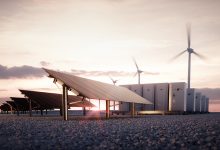The NSW government has used the Australian Energy Storage Conference in Sydney this week to reiterate its focus on supporting the deployment of small and large-scale energy storage, as part of its plan to maintain system reliability and regain ground in the shift from coal to renewables.
NSW faces looming cost and reliability challenges the electricity market without further investment, with currently high energy prices and supply constraints potentially being exacerbated through the looming exit of the ageing 2000MW Liddell Power Station.
NSW has historically lagged behind other Australian states and territories, who have been compelled to take the lead on supporting new renewable energy projects during a period when the federal government has offered little sign of supporting the sector to grow.
“Our government and this minister’s major immediate priority is ensuring sufficient capacity in NSW after the closure of the Liddell coal-fired power station in 2022,” NSW parliamentary secretary for energy Benjamin Franklin said.
“The electricity grid is undergoing a significant transition. And we’ll assist the transition.
“This is not an easy task, particularly for a coal-centric region like NSW, where most of our remaining coal-fired power stations are expected to close in the next 20 years.”
At the end of 2018, the Climate Council scored NSW poorly in the “race” amongst states and territories to decarbonise their energy systems.

The Climate Council singled out NSW for its lack of a dedicated renewable energy target, and for sluggish investments in new generation projects.
“New South Wales has limited policies to encourage renewable energy, despite having Australia’s oldest fleet of coal power stations,” the Climate Council said in its Renewable Energy Progress report.
Franklin told the conference that the NSW government would use money collected through consumer’s electricity bills under the Climate Change Fund. The funds would be deployed through a range of initiatives, with a focus on bringing new, large-scale generation and storage capacity into the market, to underpin system reliability.
“By ensuring a pipeline of new projects, the NSW Government is already helping to build the State’s pipeline of generation projects through the work of WaterNSW on pumped hydro opportunities and through the Emerging Energy Program which provides grants for large-scale, on-demand energy projects,” Franklin said.
The NSW government will look towards efficient market solutions, and projects than can deliver co-benefits or dividends back to the government. An example is the deployment of batteries into government-owned buildings, including schools and hospitals.
“This program will provide smart batteries for schools, hospitals and other key government buildings with rooftop solar systems, offering savings of up to $40,000 for some buildings while also helping demand response through a Virtual Power Plant,” Franklin said.
While the NSW government has cancelled a dedicated virtual power plant and demand response initiative launched last year, the ability to dispatch energy and coordinate expected growth in residential and commercial energy storage systems remains central to the state’s plans.
“We’re incorporating [virtual power plants] as part of the government batteries program, and there are some very interesting proposals being considered in the emerging energy program around VPPs as well. They will be getting some support.” NSW Department of Planning and Environment director of energy programs Terry Daly told the conference.
More information about the interest-free loans initiative, dubbed the Empowering Homes program, will be forthcoming, with neither Franklin or department officials providing much by way of new information. The government hopes the loans can leverage significant investment in new residential systems throughout NSW.
“The program aims to unlock up to $3.2 billion in clean energy investment over the life of the program, adding up to 3,000 megawatt hours of storage into the NSW energy system when complete,” Franklin said.







